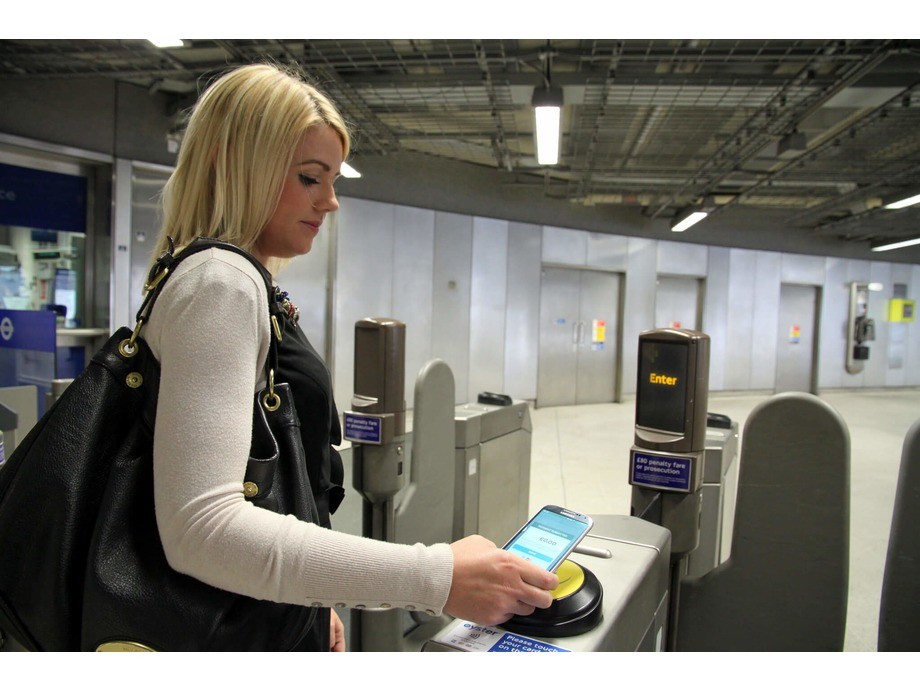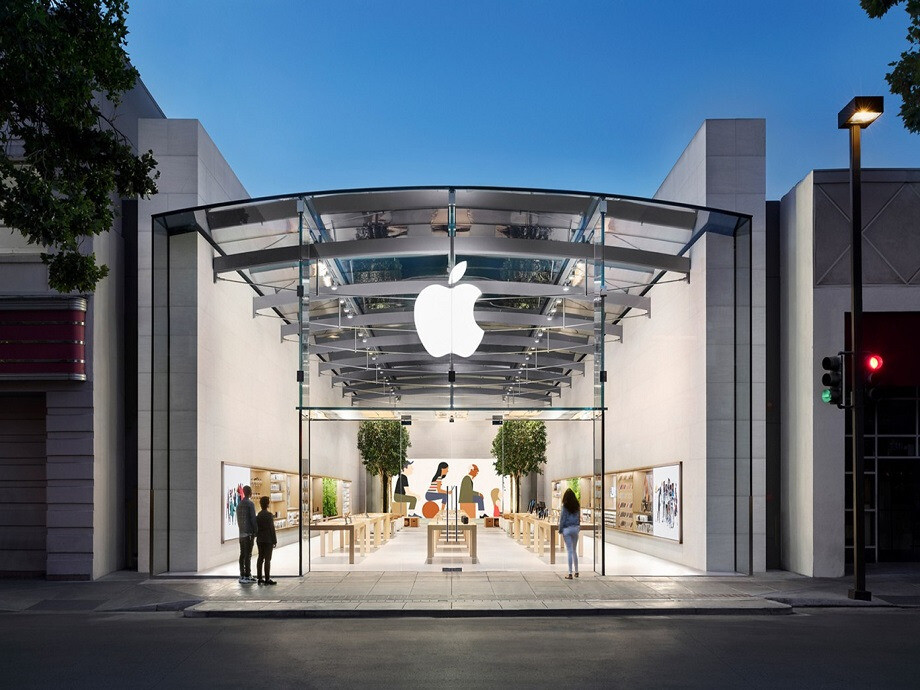
What is NFC?
The question of 'What does NFC mean?' has become increasingly common in recent years, as both businesses and consumers alike switch on to one of the most exciting new technologies to emerge. In this guide, we will take you through some key information pertaining to NFC technology, including what it is, what it does, where it is used and some of its benefits.
What is NFC?
NFC is a widely used acronym that stands for Near Field Communication, a technology that allows two electronic devices to 'talk' to each other when fitted with the correct chip (Integrated Circuit). One of the two devices - usually a smartphone or other kind of mobile device - usually is connected to the Internet (but is not always necessary) for this exchange of data to happen.
Typically, the Internet-connected device carries apps that use NFC to communicate. NFC Tags or any other type of NFC Product can also be installed on a huge range of objects, meaning the connected device can communicate with them, while sending and receiving data.
NFC meaning
Looking more closely at the term itself, Near Field Communication refers to the Contactless method by which two NFC enabled devices are able to communicate with each other at close quarters. This form of close range or Near Field Communication sits alongside older technologies, such as barcodes and UHF RFID in the Contactless sphere. But, unlike these communication methods, it offers users a host of new benefits, including a huge number of potential NFC users, thanks to the NFC capability that most smartphones have in the modern era.
How does NFC work?
NFC operates on the wireless principle, that is, the sending of information via radio waves. NFC is based on the older RFID or Radio Frequency Identification technology, transmitting information using electromagnetic induction. This electromagnetic induction takes place between two loop antennas when the exchange takes place between two devices. Unlike other wireless technologies, such as Wifi and Bluetooth, it doesn't just send data; it is also able to activate electric currents in passive components.
There are three defined modes when it comes to how an NFC device can work. These are:
NFC Peer to Peer
In this mode, there is an exchange of information between two devices that are NFC Enabled on an ad hoc basis.
NFC Card Emulation
Contactless payment and ticketing procedures can be enabled in this mode, which allows smartphones and other NFC enabled devices to operate in the same way as smart cards.
NFC Reader/Writer
In this mode, information can be read by NFC enabled devices from NFC Tags or NFC Products placed anywhere from Smart Posters to Labels and Keyfobs. It's a one way data transmission in which the smartphone, or another 'active' device, links up with a passive NFC component to read data from it.
What is the Internet of Things?
The Internet of Things, or IoT for short, is the term given to a huge range of devices and appliances that are able to exchange information with each other and sit within the Internet structure. NFC - along with other short range wireless technologies, such as Bluetooth, medium range wireless, such as LTE advanced, long range wireless, such as LPWAN, and wired networks, such as Ethernet - is one of a number of technologies that are playing a vital role in expanding IoT networks for many commercial and domestic purposes.
Where is NFC used?
The uses of NFC are expanding all the time, and while the technology has grown to be valued across a wide range of industries, there are still endless possibilities when it comes to future uses. Among the most prominent uses for NFC are:
Marketing
From Smartposters to NFC Enabled Keyfobs, NFC Business Cards and other NFC Marketing Products NFC has taken the marketing world by storm. In the digital age, when the information we consume can be condensed down to ever smaller formats, NFC has taken on the baton, providing new ways for organisations to target consumers and their fellow businesses with marketing messages.
Using NFC Tagging, all it takes is the swipe of a smartphone and consumers are able to download music, enter competitions and be directed to a particular web page. It is this instant engagement that has made NFC Marketing one of the flagship sectors that NFC Technology has conquered.
Manufacturing
In warehouses and factories, there is a pressing daily need to keep a tight grip on stock controls and track machinery. NFC has been revolutionary in this regard, allowing site managers to step up their asset control, thanks to a simple NFC Tagging system, which has the ability to tell them the whereabouts of important items at any given time. In manufacturing, NFC can be used in tandem with IoT to produce a network that covers all the required items on a site, feeding back into a single app on an NFC smartphone for convenience of review.
Retail
Step inside a modern day high street store and, while you might not notice them, there are often NFC Tags at work all over the place. For instance, NFC is giving modern clothing labels a new twist by allowing retailers to direct customers to social media networks, allowing stores to track where all their products are at any given time and facilitating Contactless payment, allowing customers to not only purchase items with a simple swipe of their smartphone, but also register the buy on a loyalty card app.
Healthcare
In health facilities, particularly large and busy ones, keeping track of hospital bed spaces can be an arduous task, not to mention one that is capable of throwing up many inaccuracies. Now, thanks to NFC, healthcare professionals are able to see at a glance the number and exact locations of bed spaces that are available and those that are currently being used.
Not only can this save time, but it can ensure that capacity is never a problem that gets out of hand due to inaccurate reporting. In home health care, carers are now able to track and verify their visits automatically and manage patient caseloads more effectively, thanks to NFC Tagging.
Other Industries
Aside from the specific sectors above, there are a multitude of other uses that NFC can help with today, including Contactless Payments for train transportation as we see on the London Underground with TFL, bus transportation, chemical plant attendance, construction site attendance, electric meter reading, guard tour management, library book checkouts, mining site attendance, security bag tracking, road safety checklists, bathroom cleaning reporting and smoke detection inspection.
Which devices support NFC?
NFC is supported by the vast majority of Android smartphones and tablets, which makes up the largest share of mobile devices in the world. This means that these Android devices become NFC readers when using NFC apps, which have been designed for a wide range of uses.
Up until 2017, Apple had held back on enabling the NFC capability that its iPhones possess, limiting its use to their Apple Pay Contactless payment system. But now that has changed and Apple are giving there customers more freedom by introducing NFC Tag reading on the iOS 11 update, meaning more and more NFC apps will become available for users on the iPhone 7, 8, 10 (X) and onwards.
To see the full list of NFC Enabled Devices that are currenty available around the World please click here
What are the benefits of NFC?
We conclude the guide with a quick fire run through the main benefits that NFC technology offers:
Efficiency
Many NFC activities result in a more efficient process than the one that was replaced by NFC, for example, being able to offer an instant brochure download, instead of having to hand out large printed editions, or allowing a smartphone user to swipe their phone and like a social media page, rather than being required to type out a URL. Making things simpler for both the back end user and consumer is one of the major plus points that has seen NFC win over converts.
Friendly for Human Resources
As well as being able to do things more quickly, NFC also allows overheads to be slashed, thanks to its ability to ease the burden on human resources. For example, a healthcare professional can use the time they previously devoted to record hospital bed spaces in different ways, and a site manager doesn't constantly need to be checking the whereabouts of parts or other assets.
Future proof
As the number of uses for NFC multiplies, NFC technology provides a support system for app developers while they continue to innovate. Safe in the knowledge that a massive share of the world's population is an NFC device owner (because all you need is a smartphone), app developers know NFC is the gateway to huge audiences. This, in turn, will encourage more developers to work on NFC related projects, adding further to the groundswell of NFC innovations.
We hope you found this guide to NFC, its meaning, uses and benefits useful. For more information on the growing use of NFC technology and its technical specifications take a look through our NFC Information pages by clicking here - you can rely on us for an expert consultancy on all manner of NFC solutions.



Comments